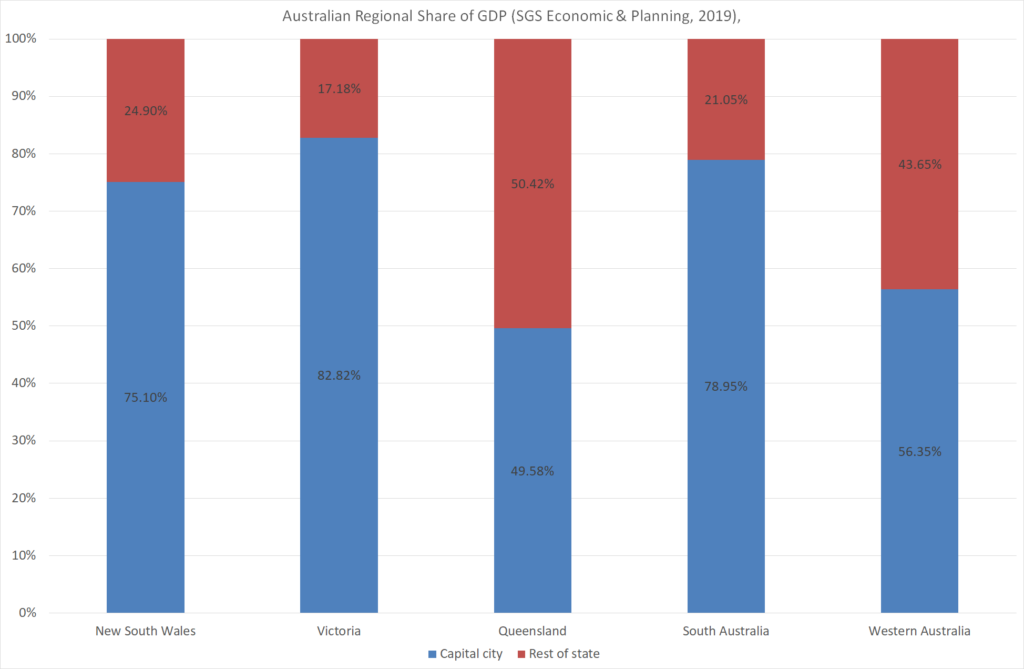Australian regional GDP
I recently posted about regional concentration of populations and innovation ecosystem support actors. I am looking to expand on that to examine employment and GDP. Turns out it is not that straightforward due to how companies report data and timeliness of information.
The ABS has a good tool that consolidates data by region, with access to the underlying dataset. State-level data is also available in the ABS State Accounts, Cat. No. 5220.0. I have been working through these and posted a snippet yesterday.
A came across great detailed reporting by SGS Economic and Planning who used ABS data and their own methodology to break down GDP by non-metro areas.
Their report highlights the need for economic diversification to mitigate impacts on a dominant sector (agriculture, mining).
Falls in agricultural production as a result of drought conditions saw Regional South Australia (-2.9 per cent), Regional Victoria (-1.4 per cent), Regional New South Wales (-0.3 per cent) all experienced a technical recession during 2018-19. Regional Western Australia and Regional Queensland also saw substantial falls in agricultural production but avoided a technical recession due to increased mining production.

The report further breaks down an analysis by capital city and regional areas by state and industry sector to show GDP change over time.

The percentage of GDP across the state generally reflects business and population concentration, per the quick graph below I did up from the SGS data. A future research will be to examine the regional policies of each state to see where they align with percentage of regional GDP.

There is data, and then what the data means. These posts act as a scratch pad as I review the data before putting too much meaning into it. The obvious takeaway is that Australia is a regional nation, dedicated regional policies and interventions are needed, and there is a life’s work to be given in focusing on the “red” in the graph above.
Looking forward to a weekend of cleaning up the piece on the Australian and Queensland context for the thesis, followed by another body of work to release between now and Monday on global approaches to innovation measurement.
